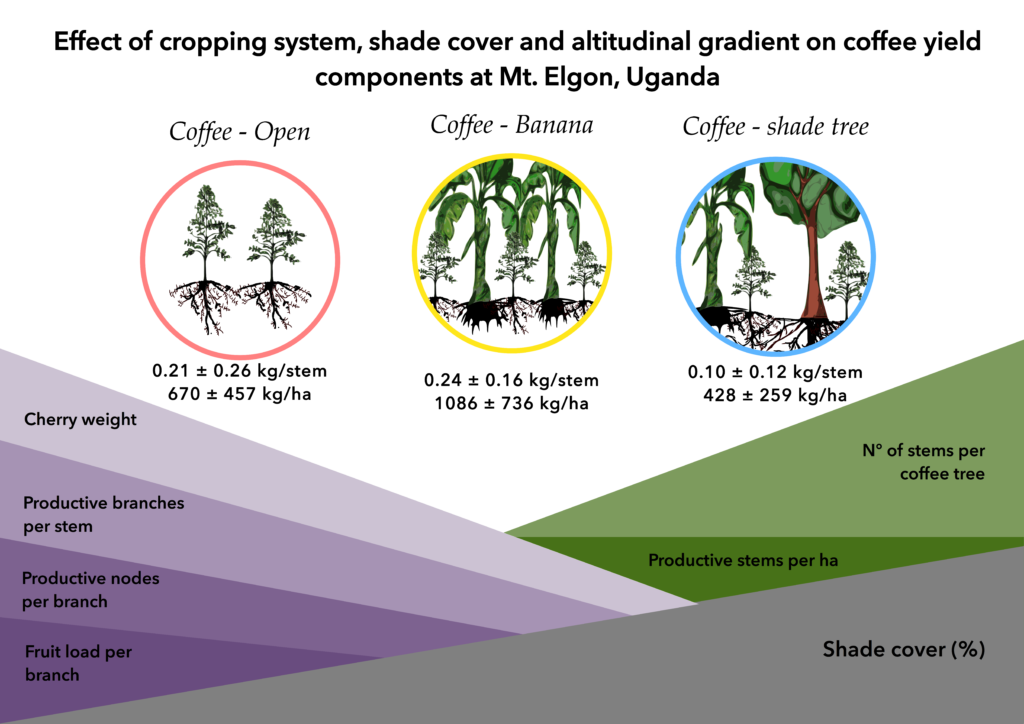
Coffee is a key export commodity of East Africa, but average smallholders’ yields are low. To guide sustainable yield improvements of smallholders’ coffee systems, we investigated coffee yield components in three different types of coffee cropping systems along an altitude gradient (1100−2100 m.a.s.l.) during two production years (2015 and 2016). We selected 810 coffee trees distributed over 27 farms and monitored number of stems per tree, fruit load per branch, productive nodes per branch (on four branches of one stem per tree) and number of productive branches per stem (on one stem per selected tree) in both years. Additionally, we monitored pro- ductive stems per ha, coffee tree density and cherry weight in combination with pest and disease occurrence and management information from interviews. Coffee farms were classified as Coffee-Open (CO) (< 20 % shade cover), Coffee-Banana (CB) (coffee dominantly intercropped with bananas) or Coffee-shade Tree (CT) (coffee dominantly intercropped with shade trees). Coffee-Banana had larger yield per ha (green bean kg ha−1) (1086 ± 736 kg ha−1) and yield per stem (green bean kg stem−1) (0.24 ± 0.16 kg stem−1) than CO (670 ± 457 kg ha−1 and 0.21 ± 0.26 kg stem−1) and CT (428 ± 259 kg ha-1 and 0.10 ± 0.12 kg stem−1). Fruit loads, productive nodes, productive branches and cherry weight declined with shade cover, especially for shade cover > 30 %. Additionally, the same yield components correlated negatively with number of stems per tree. Fertilizer and fungicide use were related to more productive branches and cherry weight respectively, and stem borer was identified as the most important pest in this area. Our results suggest that yield in the region could be increased, i) by maintaining shade at an intermediate level, particularly at low and mid altitude and by reducing the number of stems per coffee tree (< 4), and ii) by improving soil fertility and protection against pest and disease.
Find complete article here